An exquisite type of lace, which has established itself in the markets as an integral accessory of a wedding dress, has rapidly burst into the consumer's everyday life. Delicate weaves of silk and synthetic threads change colors and styles. Openwork fabric remains popular in various spheres of life. What is the secret of success?
What is this?
Relief lace, connected by a fine mesh of synthetic threads, owes its appearance to Venice in the 16th century. The creation of bedspreads from voluminous floral fragments, connected by hand-weaving of threads in the form of a mesh, owes its origin to the masters at the courts of the nobility. Lace collars and cuffs gradually spread throughout Europe and reached the remote corners of Russia. Guipure is a craftsmanship of the highest class.
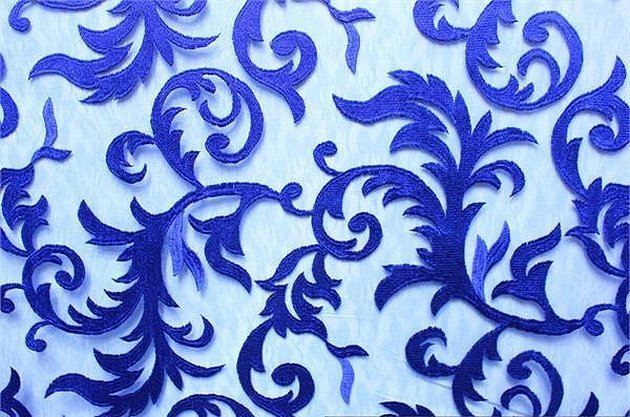
Lace inserts over the entire surface of the fabric add elegance and originality to the canvas. Rigid fabric with openwork weaving looks especially delicate in combination with other types of material. Guipure with satin is especially beautiful.
For your information! The most common type of clothing is the bride's wedding dress.
Lace embroidery on canvas is used to create the following products:
- underwear;
- tulle;
- window curtains;
- evening dresses;
- wedding dress;
- business blouses;
- bedspreads and festive tablecloths;
- insert elements when sewing other clothes.

When and how did they start making guipure?
The Italian origin of knitted lace fabrics for decorating dresses, shawls, scarves gave rise to the widespread use of fine lace. Previously, silk threads were intertwined with gold and silver for special occasions for the highest officials of the state.
Russia became acquainted with the production of guipure at the beginning of the 19th century. In the village of Katunki, Nizhny Novgorod province, craftswomen were trained in weaving and knitting guipure by hand on knitting needles, hooks and bobbins.
For your information! Handwork was expensive and not everyone could afford it. The difficulty of creating three-dimensional drawings was in depicting people and animals, scenes from the Bible and other ornaments commissioned by the nobility. The gradual reduction of the drawing led to standard scatterings of small flowers, leaves and edging patterns.
The interlacing of lines and personalized monograms, thin as hair, began to be used at Russian courts. Flax, cotton and silk were used in production. The difference between openwork and guipure is in the creation of volume in the latter case. Embroidered ornaments connected by a net form guipure fabric. Italian and French guipure fabrics are noted for their refined design and high quality.
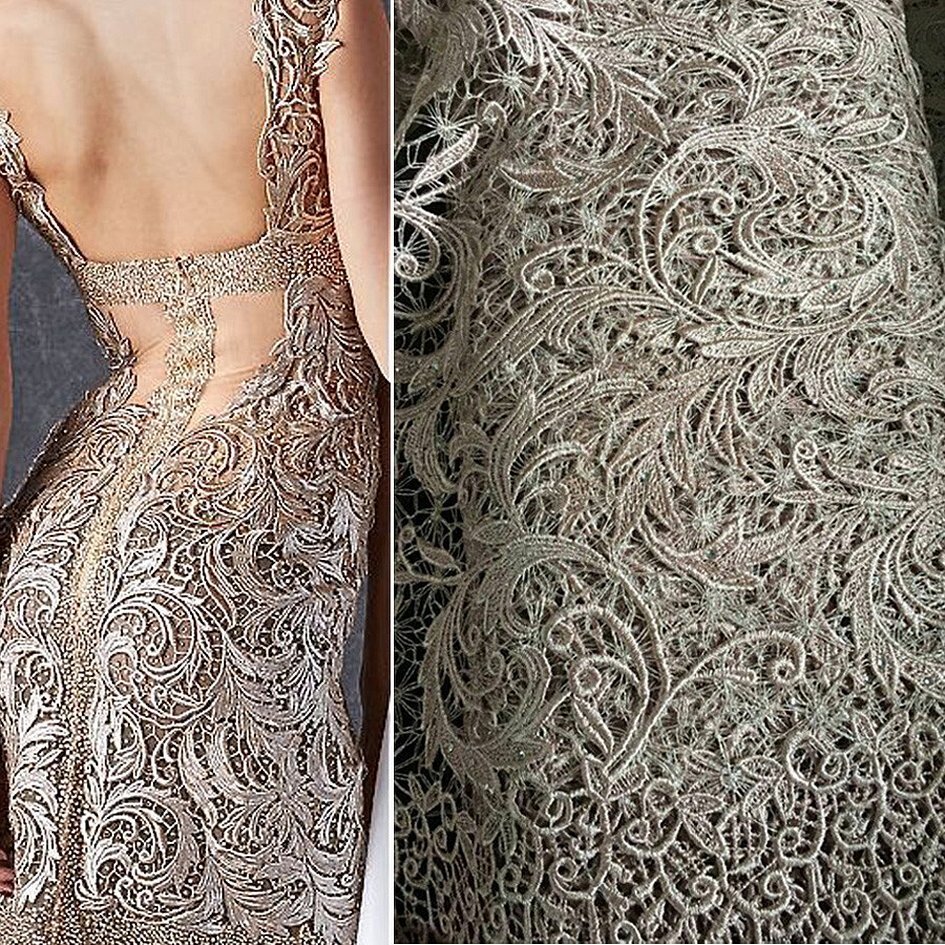
Composition and properties
Constant improvement of production technology introduces synthetic fibers into the fabric, complementing natural fibers and giving the material new qualities. Increased strength and elasticity due to viscose, acrylic and elastane leads to thickening of the fabric and increase in the volume of the pattern.
The components included in modern guipure:
- silk thread from the cocoon of a silkworm;
- cotton thread made from cotton fibers;
- natural linen;
- artificial viscose obtained from wood pulp;
- synthetic lurex, metallized and foil-coated thread for shine;
- stretchable synthetic lycra;
- polymer fiber - synthetic polyester.

The proportion of lace and mesh base determines the properties of the lace fabric. The fewer lace elements and more mesh, the material will be softer and more elastic. If the opposite is true, then the guipure becomes rigid and dense due to the increase in the area of the pattern and the decrease in the area of the mesh base. What guipure looks like, we know from school age.
The main qualities of guipure material are:
- transparency of the product without additional lining;
- the lightness of the fabric is ensured by the presence of a weightless mesh;
- high wear resistance;
- resistance to deforming factors;
- breathability;
- possibility of draping.
Important! The elasticity of the material is ensured by the presence of stretch fibers in the mesh.
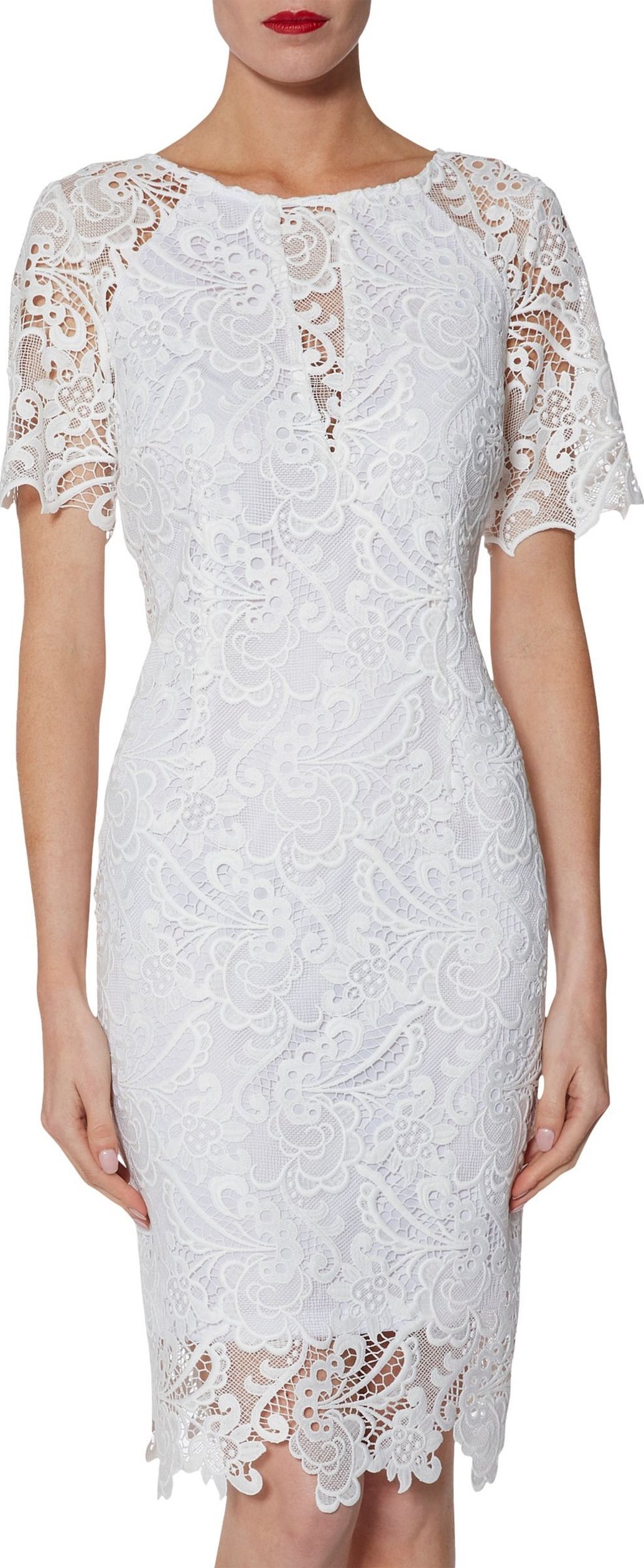
Advantages and disadvantages of guipure fabric
The advantages of guipure fabric include its aesthetic appeal, which gives any style of clothing a festive and solemn look. In addition:
- the possibility of using guipure to decorate interior elements;
- use of both independent fabric and in the form of inserts;
- ease of care of products;
- the average degree of elasticity increases the number of options for using the material;
- lightness of construction, ensured by the low weight of the fabric;
- Guipure products suit everyone with the right choice of color, style and sewing style.
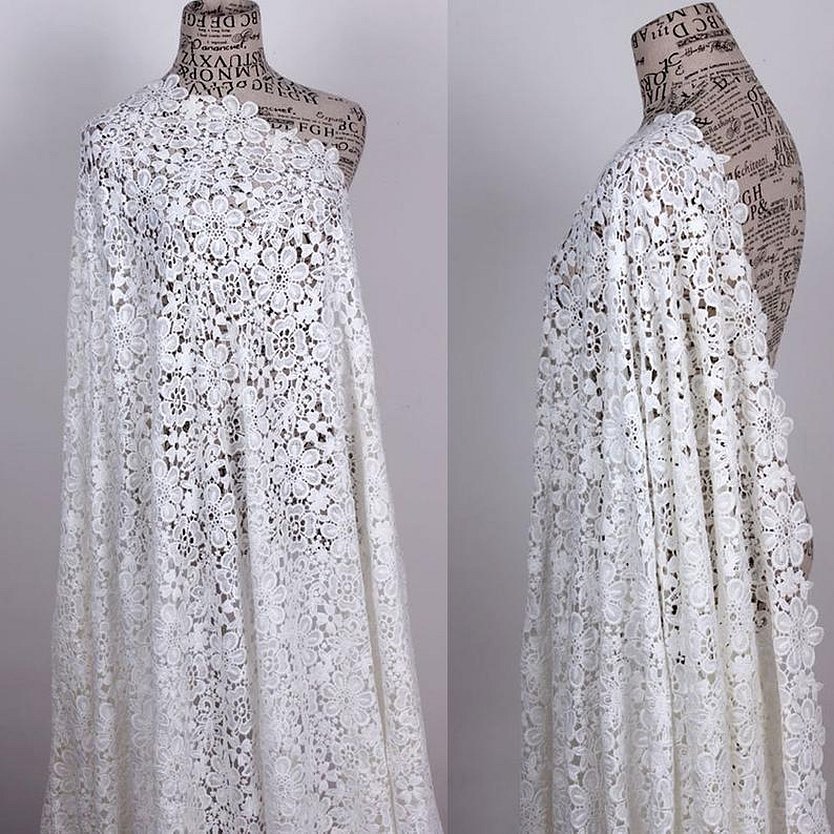
Flaws
It is impossible to use only guipure fabric to make an outfit, because the material is translucent. Fabric with added stretch or lurex can form snags when hooked.
Guipure is a fabric that is made by hand, so it is very expensive. And if not properly cared for, it can become deformed. A hot iron can ruin the mesh base made of the finest threads.
There are far fewer disadvantages than advantages, but they require special attention.

Scope of application
It has become common to make formal dresses and elegant blouses, underwear. But the use of guipure is also appropriate in other cases:
- curtains and drapes;
- lambrequins and curtains;
- cocktail dresses, as well as dresses for weddings and proms;
- gloves and stockings with guipure trim, corsets;
- sundresses and tops, school aprons and boleros;
- lace ribbons and cuffs with collars for dresses or blouses;
- shawls and scarves or trim for them;
- decorating pillows and bedspreads, canopies;
- tablecloth trim and tablecloth edges;
- finishing of floor lamps and wall sconces, table lamps and light fittings.
In combination with other fabrics it can be used to make stage costumes for the theatre, circus, and gymnasts.
Please note! Wedding accessories made of guipure will make the bride's image more complete. The embroidered cord will give the image unearthly beauty.
Guipure lace is used for inserts into individual elements of clothing, headwear, bags and umbrellas, shoes. What is guipure is clear from the presented assortment.

For decoration
A curtain fabric made of openwork guipure will decorate any interior, and the finishing of tablecloths or bedspreads will emphasize the stylishness of the design. Canopies for a bedroom or a child's crib will highlight the exquisite taste of the owner of the house. In addition:
- Decorating towels or knitted fabrics with lace ribbon in the style of elite apartments will add a festive atmosphere to the home. Making carnival masks and flower arrangements with guipure elements will add a sense of fairytale space to a child's room or living room;
- decoration of blankets, tablecloths and napkins, floor lamps and lampshades in theatrical art. Art workshops use guipure ribbons as stencils for applying patterns to surfaces;
- decorating gift boxes and baskets for storing small items for creativity. Making details for paintings and panels, decorating collages using openwork guipure;
- restoration of worn-out shoes and ballet flats, renewal of a clutch or evening bag, making wedding accessories for guests of the celebration.
As you can see, this is excellent material for the flight of creative imagination.

Color range of dresses with guipure
A dress in any color scheme will look amazing:
- White guipure is used for wedding celebrations, snowflake costumes or Snow Maiden. The stage images of the White Swan or the Snow Queen cannot do without white guipure;
- beige shade is more often used for curtains, less often for blouses and suits;
- Red guipure is used in sewing evening dresses. Wine or coral shades can be used for a business style dress or suit. Pink guipure is most often chosen by girls;
- blue guipure with a tint of sapphire or indigo takes pride of place among fashion accessories and feminine blouses;
- Black guipure adds severity to the dress. The emphasized slenderness and imperturbability of color in the style of Coco Chanel can be complemented with bright red lipstick.
Important! Guipure with embroidery is used for blouses and turtlenecks, and upper inserts for dresses.
The fabric created for the holiday is mainly used by women. The description and difference of fashionable colors and styles can always be seen on the front pages of glossy fashion magazines.

How to choose the right guipure dress
Short dresses are more suitable for long-legged, slender representatives of the fairer sex. Fitted models can easily be used both at a celebration and on everyday business trips.
An elongated dress will add femininity, and the choice of fabric with a small pattern will hide the features of the figure if necessary.
Asymmetrical length, as a tribute to fashion, is used with high-heeled shoes. The image of lightness and charm is guaranteed to the owner of such an outfit.
Lighter shades of fabric are suitable for thin and slender girls, while obese women should pay attention to darker colors of clothing.
The ideal evening dress implies a strict tailoring style with an open neckline and bare arms. If the image should correspond to a business style, then sleeves should be present, and the length of the dress can remain maximum.
Cold tones of the material visually hide figure flaws and make the girl look slimmer, reducing her actual size. Partial trim of the dress with lace guipure emphasizes the advantages of the selected fragments of the outfit and silhouette.
Among the fashionable styles, dresses in the mermaid, sheath and Greek styles remain. Skirts are almost never sewn from guipure as a separate type of clothing.
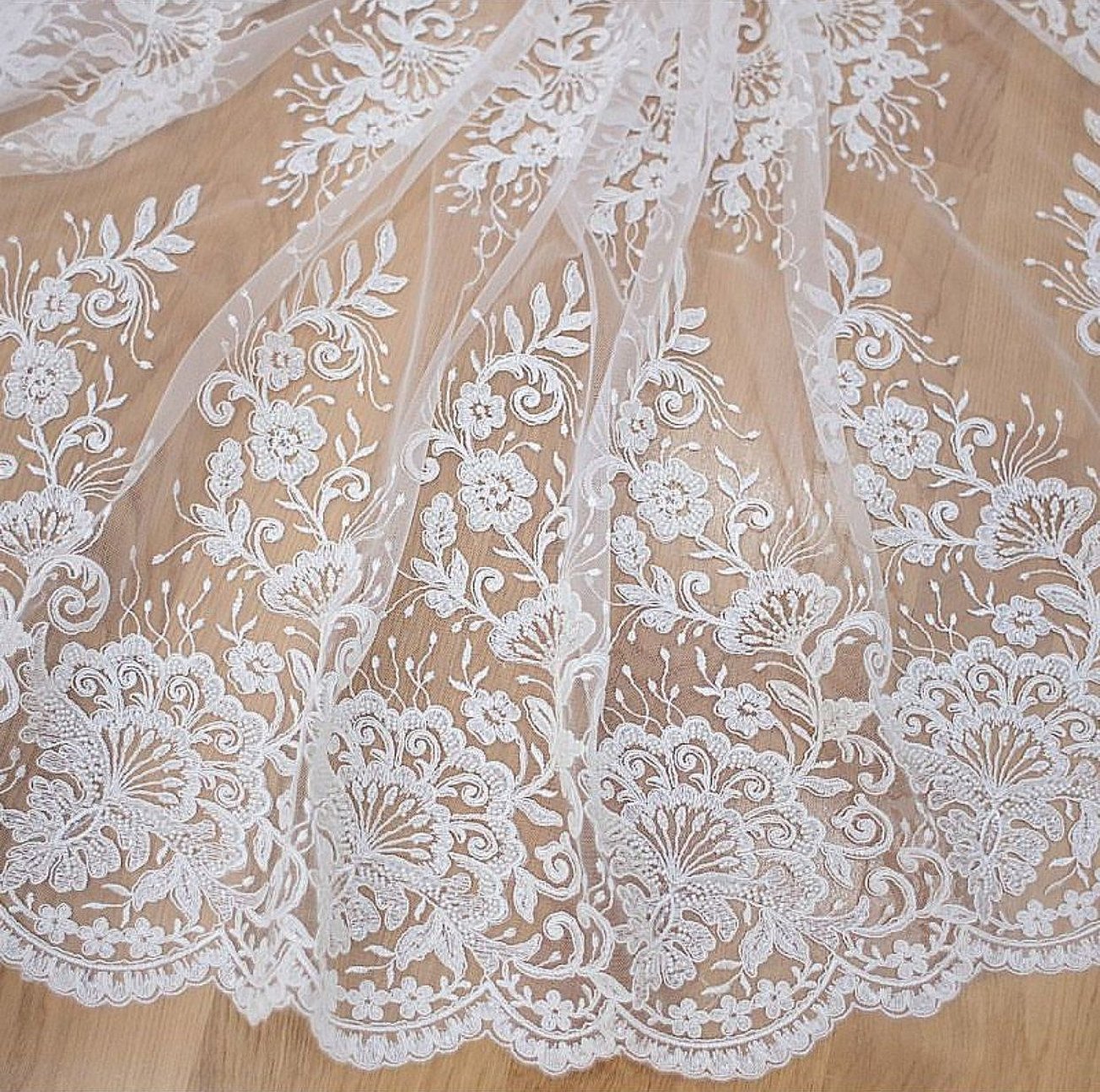
What to wear with guipure dresses
Neat sandals with a small heel remain a win-win option for any outfit. Ballet flats or pumps reflect the retro style and require an addition in the form of a small bag. In the country style, it is recommended to wear boots, a leather jacket and ethnic accessories. An evening dress is associated with a clutch and high-heeled shoes.
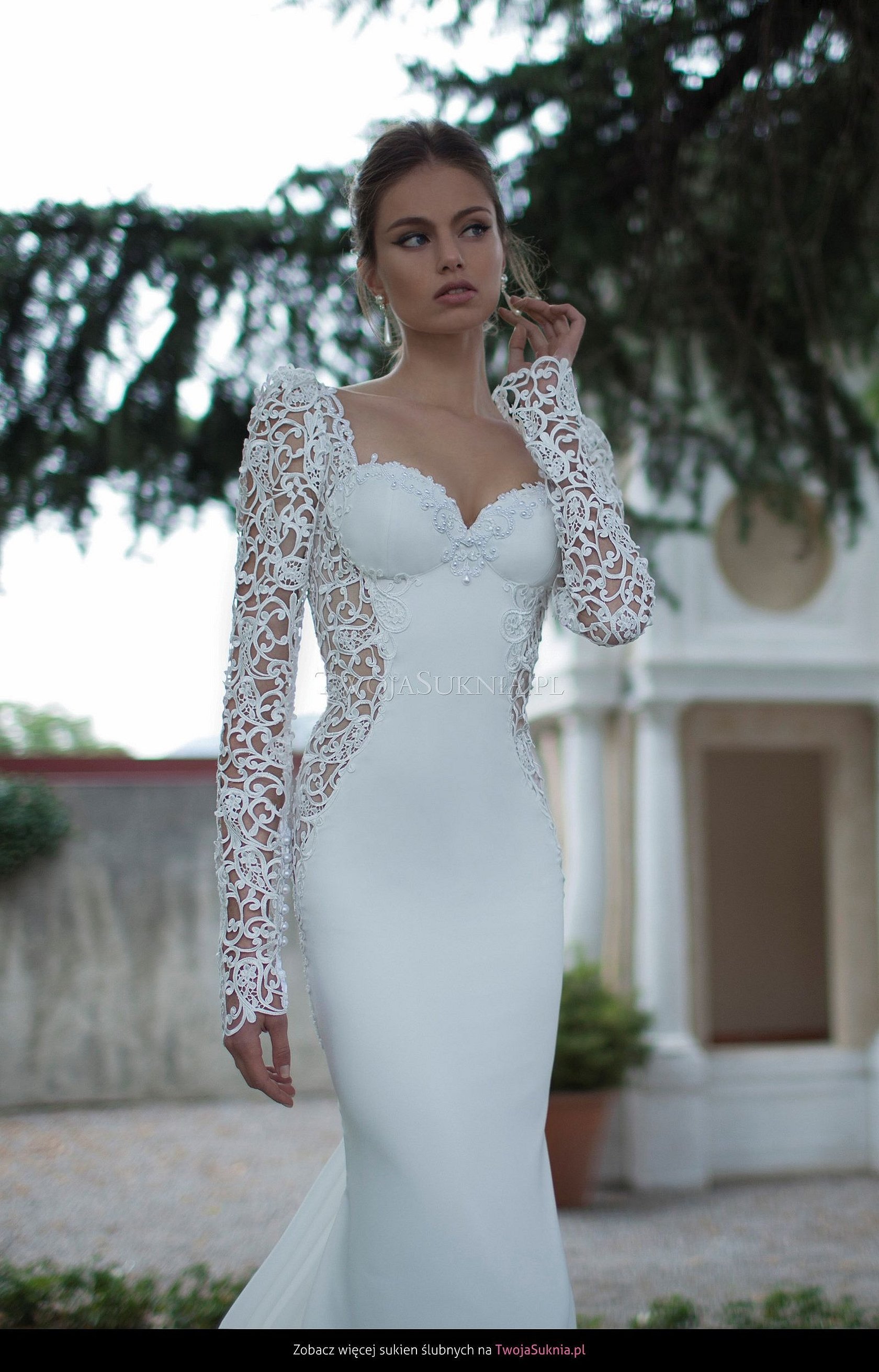
Care instructions
Openwork fabrics require delicate washing at a gentle water temperature and a minimum amount of detergent.
Preference is given to hand washing the product, avoiding machine washing. Harder guipure can be trusted to the washing machine on a delicate mode, preferably without spinning. The composition of the fabric must be taken into account.
Ironing is done in the "Silk" mode with a non-hot iron. All manufacturer's recommendations for fabric care are indicated on the label.
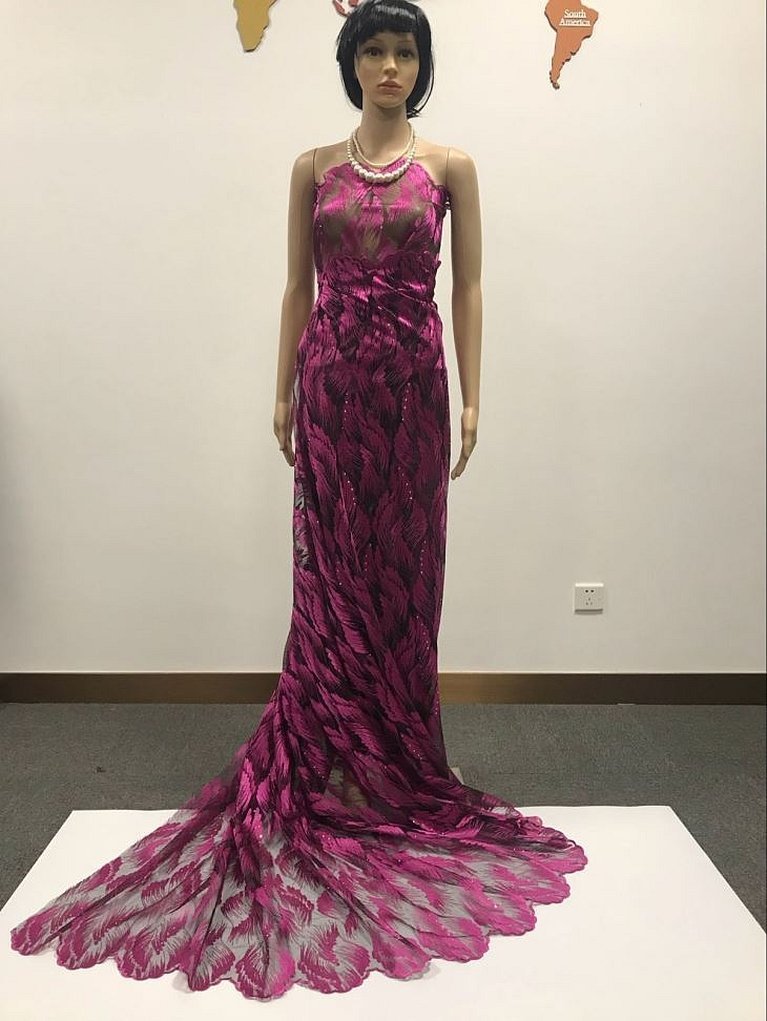
Light and airy material can serve for a long time with proper care of the product. Guipure is a fabric designed to improve the mood of not only a woman, but also those who look at her.




